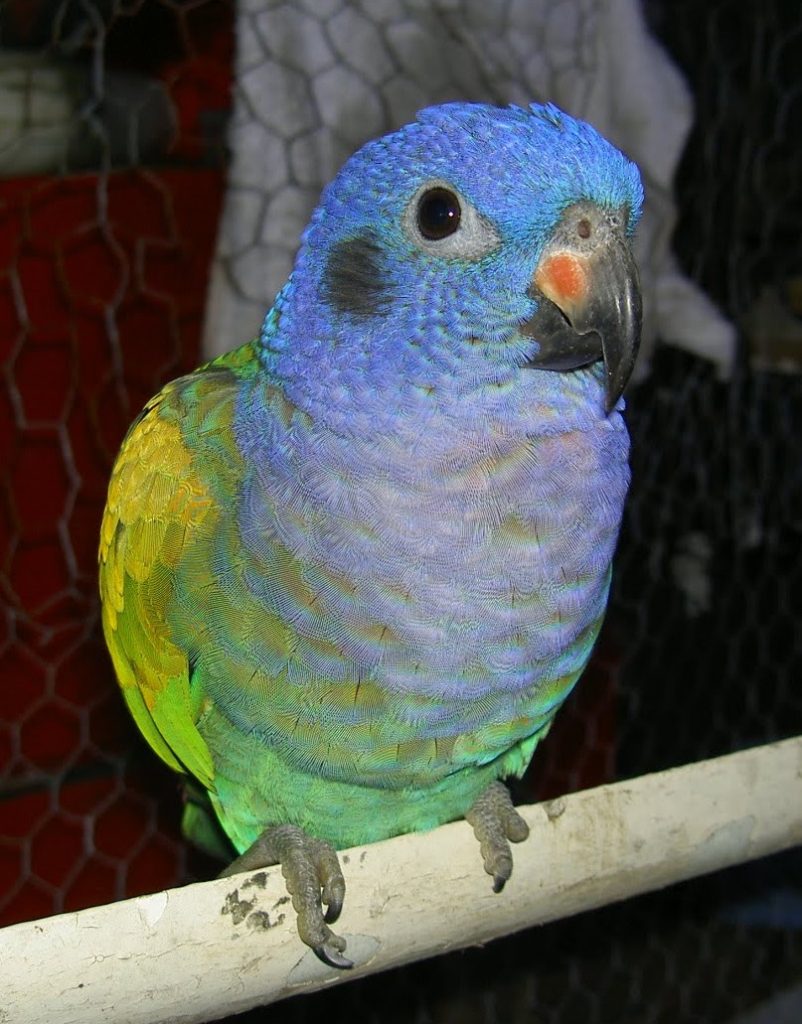The blue head parrot of panama called the “casanga”

Introduction
The Casanga is a beautiful, vibrant blue-headed parrot found exclusively in Panama. With its bright yellow chest and wings, it stands out among other birds in the area. The species has been studied for more than two centuries, yet many details of their ecology remain unknown. This article will explore the fascinating behavior and habitat of this unique bird species to better understand its place in the environment.
Physical Characteristics
The Casanga parrot measures between 33 to 35 cm (13 – 14 inches) from head to tail with an average weight of 230 g (8 ounces). Its body is predominantly green but each individual boasts a unique shade that can range anywhere from dark olive green to light sky blue or even deep turquoise. The most striking feature of the Casanga is its bright electric-blue crown which contrasts nicely against its yellow breast and wings. On either side of their heads are large feathers called ‘ear tufts’ which show subtle differences between males and females; males have more prominent ear tufts than females do. In addition, female Casangas tend to be slightly larger than male specimens on average.
Habitat & Distribution
The majority of wild populations are found in lowland forests throughout Central American countries such as Costa Rica, Honduras, Guatemala, Nicaragua, and El Salvador where they inhabit humid tropical climates at elevations ranging between 0–1 200 m (3 937 ft). They prefer dense vegetation near water sources like streams or lakes although some may venture into nearby mangroves or dryer subtropical areas as well during the breeding season if food resources become scarce – particularly when seeds are abundant elsewhere within their range. Smaller numbers also appear regularly around human settlements due mainly to importation by pet owners who keep these birds as pets without realizing they’re actually native species! It’s estimated that approximately 10% percent of all wild populations reside outside protected areas so conservation efforts should focus heavily on educating people about proper management practices before releasing any captive individuals back into natural habitats again otherwise there could be serious consequences for biodiversity levels over time since not enough research exists yet about this particular partridge variety’s population dynamics specifically.
Breeding Habits & Feeding Patterns
Casanga parrots usually mate for life pairing off one male with one female per pair though occasional polygamy does occur occasionally amongst younger members who haven’t quite settled down yet permanently with a partner just yet – however, once mating pairs have formed up then typically both partners take active roles caring raising chicks together until fledging occurs after which point juveniles disperse away to find new territories establish themselves independently elsewhere eventually hopefully forming future generations too somewhere else further down the line likewise too! As far as diet goes they’re mostly fruit eaters supplemented with nuts grains insects larvae small animals etc whatever happens come across while scavenging around looking for something tasty fill empty stomachs afterward.
Challenges Facing Species Survival
Unfortunately despite beauty intelligence resilience casangs face number challenges related threats endangerment survival longterm success today principal problem being destruction habitat caused agricultural activities urbanization logging deforestation climate change effects rising temperatures changing rain patterns etc all negatively affecting wildlife fragile ecosystems pushing already threatened towards brink extinction unfortunately leaving some little hope recovery uncertain prognosis currently standing way matters worse furthermore recent years saw increased cases poaching illegal trade black markets leading massive declines population numbers drastically reducing chances surviving returning healthier state anytime soon unless drastic intervention takes place sooner rather later course things could possibly turn corner favour hereupon remaining optimistic outlook remains same nevertheless perilous situation still persists regardless current trajectory doesn’t seem good realist eyes either…
Conclusion
In conclusion, we’ve seen how stunningly beautiful aesthetics coupled with intelligent behavior make casangas truly marvelous creatures delight behold sadly however factors beyond control threaten existence forcing them ever closer edge extinction great lengths must be taken to ensure protection preservation, and preserve delicate balance nature allowing us to marvel these incredible avians for future generations.




